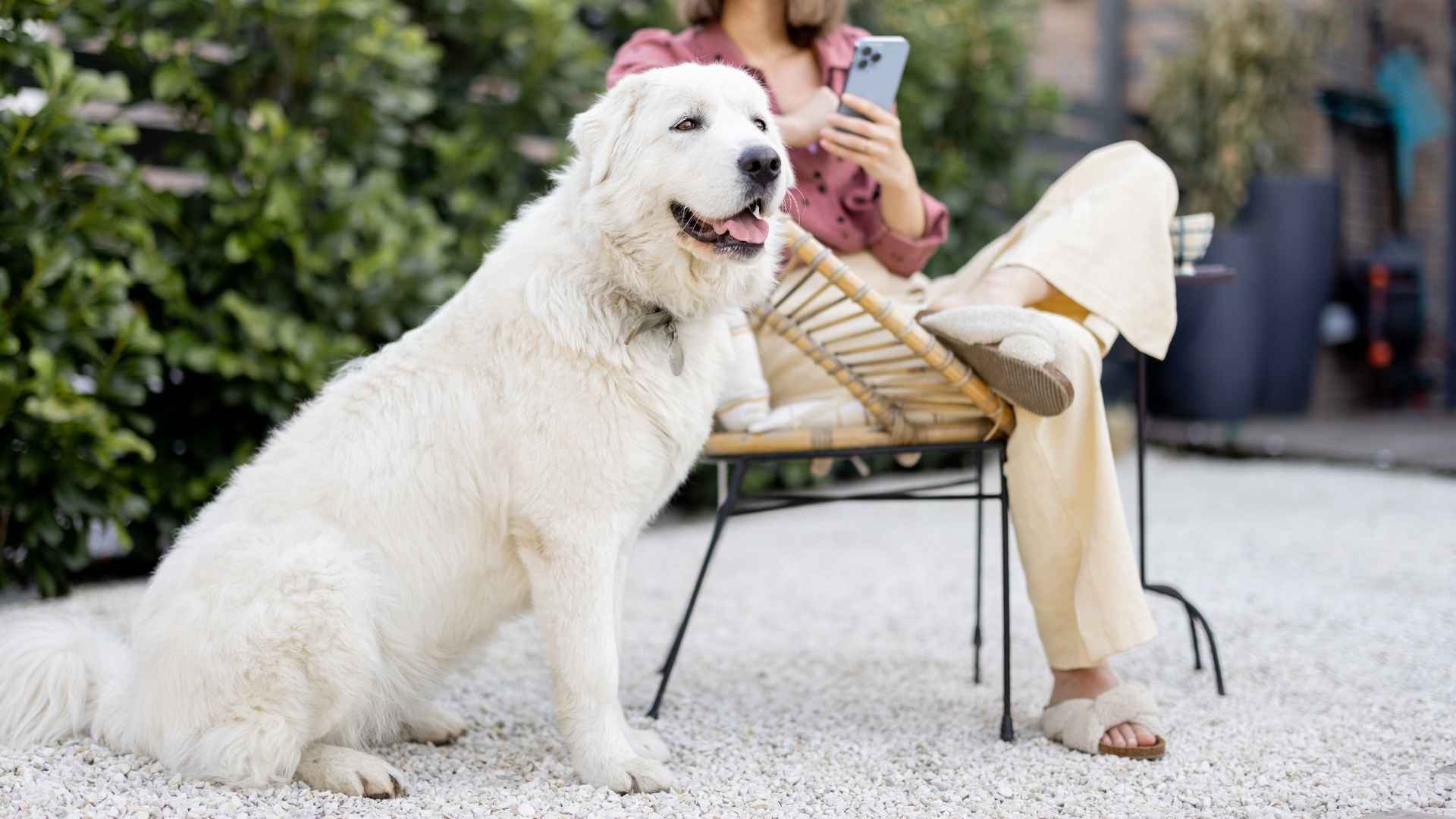Loyalty in a dog is more than simple affection—it’s a bond forged through trust, courage, and an unwavering readiness to stand by their human’s side. Throughout history, certain breeds have distinguished themselves not only through companionship but also through remarkable acts of bravery.
These dogs have worked alongside people in fields, on battlefields, and in the home, proving their dedication in ways both heroic and heartwarming.
In this article, we’ll explore these and other courageous breeds whose loyalty often goes untold, revealing how their unique histories, skills, and temperaments continue to make them some of the most steadfast companions in the world.
Brave Dog Breeds Whose Loyalty Is Untold
1. German Shepherd
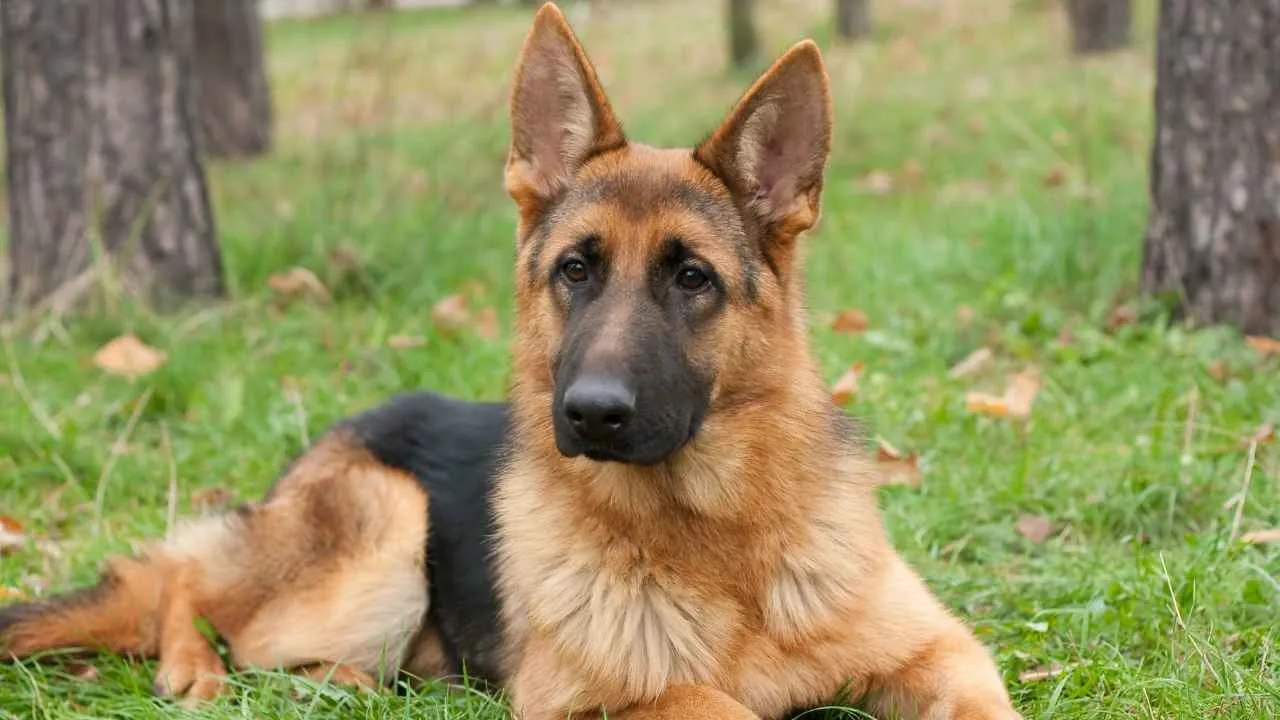
Bred in late 19th-century Germany by Captain Max von Stephanitz, the German Shepherd was designed to be the ultimate working dog—combining intelligence, strength, and adaptability. PetMD says German Shepherds are big, athletic, muscular, intelligent, and loyal dogs.
Originally used for herding, the breed’s skills quickly transitioned into military and police work, excelling in roles that demand discipline and courage. Known as the Alsatian Wolf Dog in Britain during World War I, they briefly faced declining numbers in the U.S. due to anti-German sentiment, but their exceptional abilities brought them back into favor.

Breed Snapshot:
Height: 22–26 inches
Weight: 50–90 pounds
Group: Herding
Life Span: 9–13 years
Distinct Features: Strong, athletic build; erect ears; intelligent gaze
German Shepherds are both fearless protectors and affectionate family members, often displaying a playful side at home. Their versatility makes them invaluable as K-9 units, guide dogs, service animals, and in search-and-rescue operations.
Fun Fact: Rin Tin Tin, a German Shepherd dog rescued from a World War I battlefield, became one of Hollywood’s first canine stars, helping to popularize the breed worldwide.
2. Cane Corso
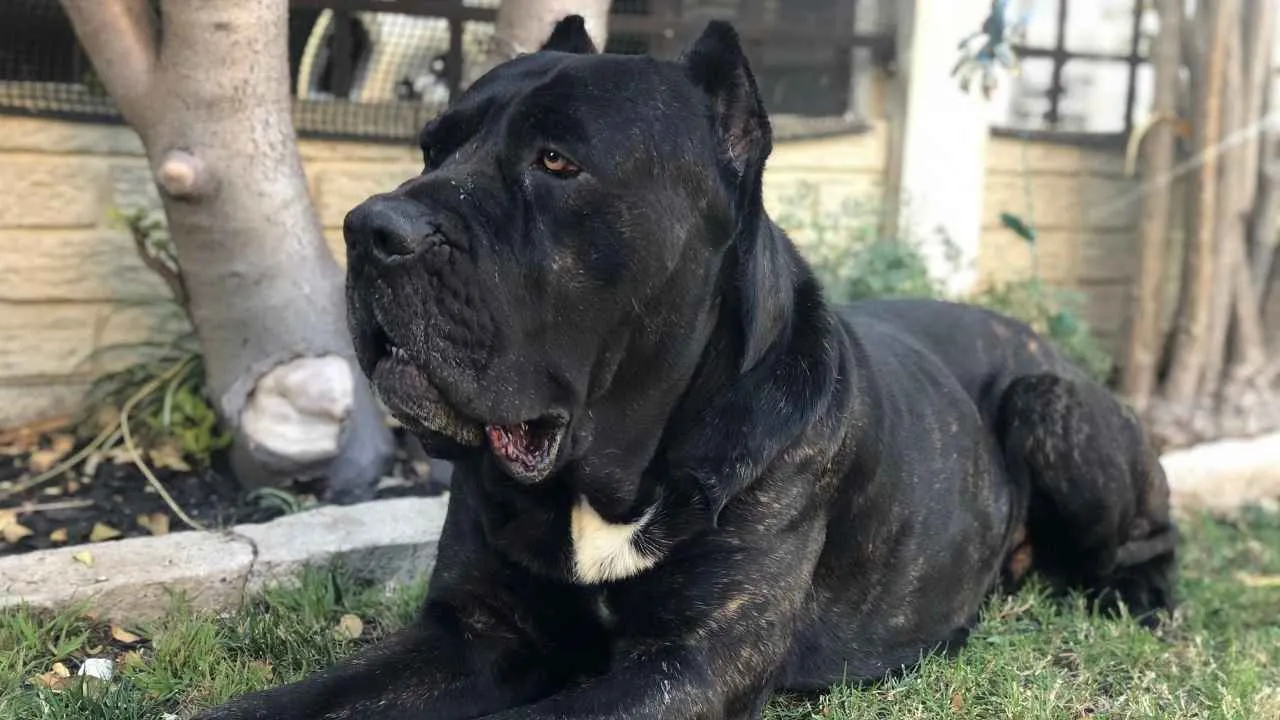
Originating from ancient Rome, the Cane Corso descends from Molossian war dogs once used in battle and later as versatile farm guardians in Italy. AKC says that the breed’s name translates from Latin to mean bodyguard dog.
Standing 23–28 inches tall and weighing 90–110 pounds, the Cane Corso belongs to the Working Group and typically lives 9–12 years. With a muscular build, broad head, and alert expression, this breed often sports colors like black, brindle, fawn, or gray, sometimes paired with a distinctive facial “mask.”
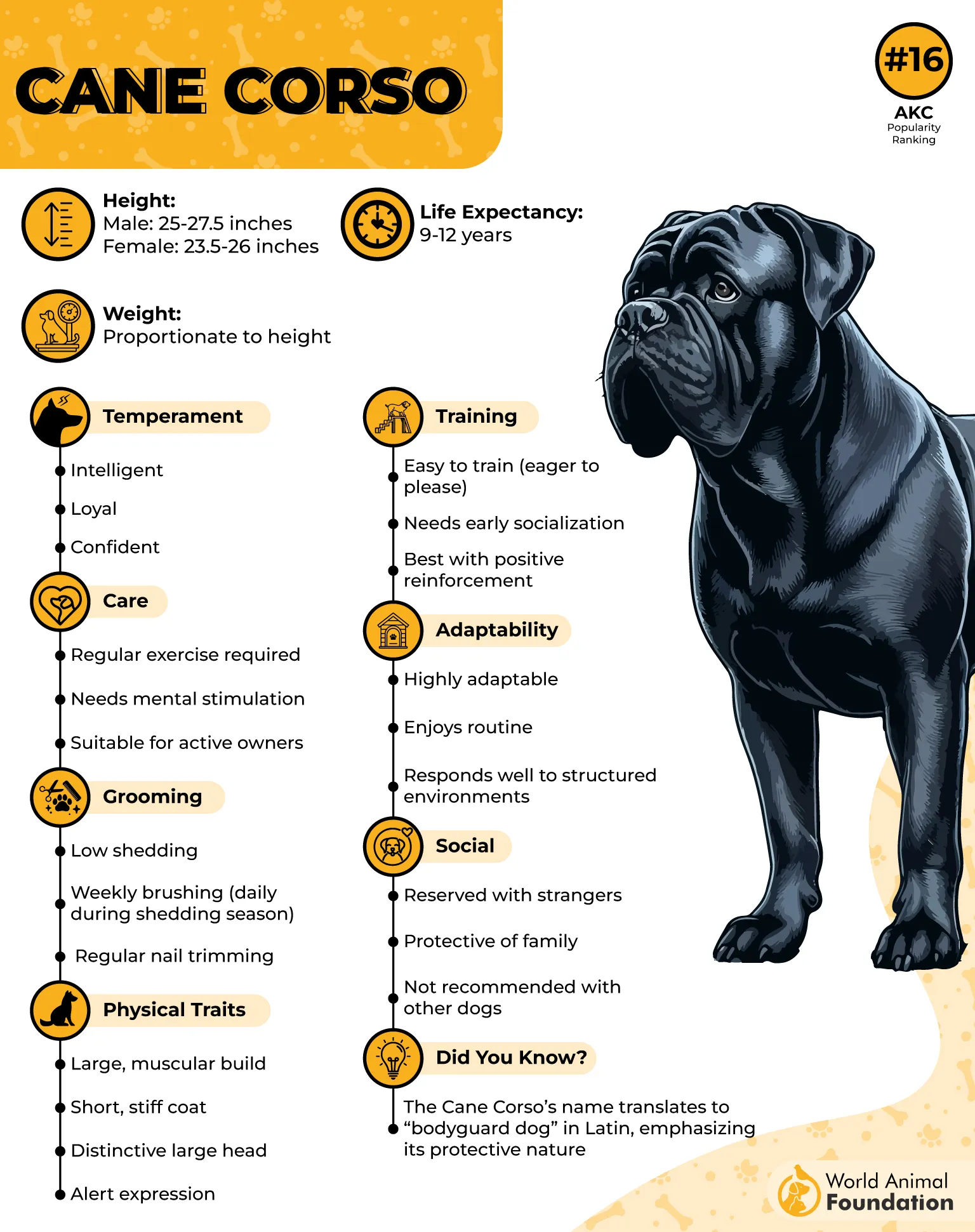
Breed Snapshot:
Also Known As: Italian Mastiff
Group: Working
Height: 23.5–27.5 inches
Weight: 90–110 pounds
Life Span: 9–12 years
Distinct Features: Large, muscular build; broad head with pronounced stop; expressive almond-shaped eyes; short, dense coat
Temperament: Loyal, protective, confident, intelligent
Coat Colors: Black, gray, fawn, red, and brindle variations
Origin: Italy, with roots tracing back to ancient Roman war dogs
While naturally devoted to their families, Cani Corsi require early socialization and firm, consistent leadership. Their protective instincts remain strong—even during moments of rest.
Minimal grooming is needed thanks to their short, smooth coat, but they do require ample exercise to maintain muscle tone and mental balance.
Fun Fact: Though the Cane Corso’s lineage stretches back to Roman times, it wasn’t widely known outside Italy until the 1980s and only gained American Kennel Club recognition in the 21st century.
3. Boxer
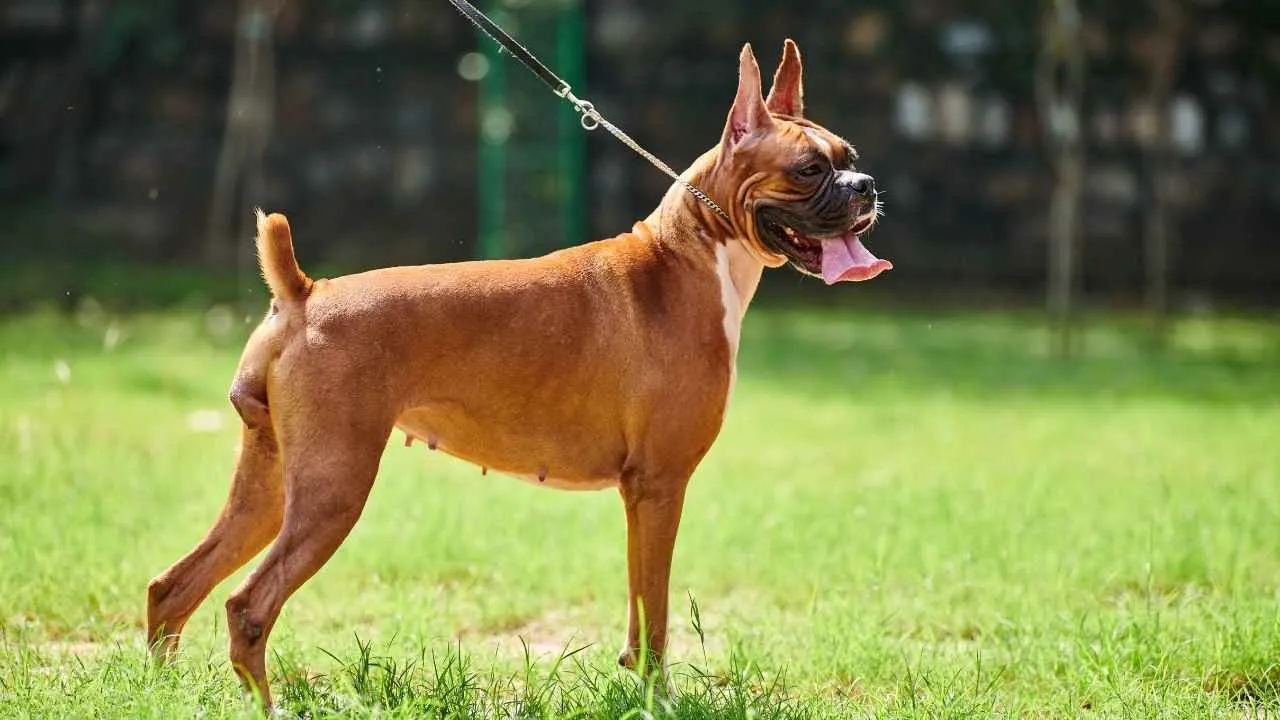
Energetic, courageous, and endlessly devoted, the Boxer has a rich history that traces back to late 19th-century Germany. WebMD says Boxer dogs are friendly and protective, making them excellent family pets.
Developed by crossing the now-extinct Bullenbeisser with the English Bulldog, the breed was originally intended for big-game hunting—capable of holding formidable prey like boar or bear until the hunter arrived.
Over time, their athleticism and loyalty transitioned them into versatile working roles, from police and military service to guide dog duties.
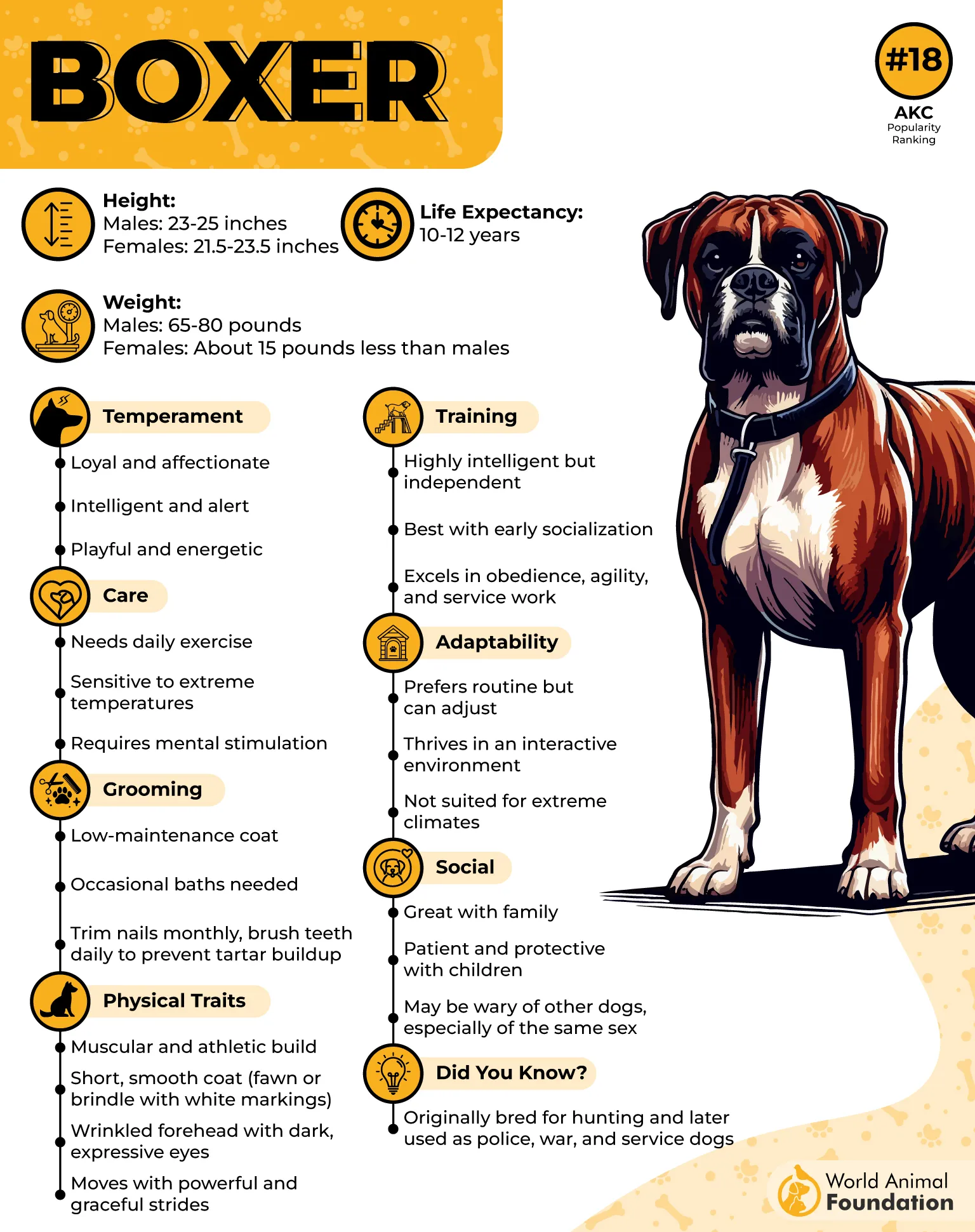
Breed Snapshot:
Height: 21–25 inches
Weight: 65–80 pounds
Group: Working
Life Span: 10–12 years
Distinct Features: Square build, short muzzle with black mask, shiny fawn or brindle coat
Known for their playful spirit and “boxing” motion with their paws, Boxers balance affectionate family companionship with unwavering protective instincts.
They are bright and friendly in familiar settings, yet alert and fearless when guarding their home. Their adaptability makes them equally suited for active households and disciplined working environments.
Fun Fact: Hollywood icons Humphrey Bogart and Lauren Bacall were devoted Boxer owners—receiving a pup named Harvey as a wedding gift in 1945.
4. Great Pyrenees
Majestic and serene, the Great Pyrenees has safeguarded livestock in the rugged Pyrenees Mountains for centuries. Renowned for its calm yet vigilant nature, this Working Group breed stands 25–32 inches tall and weighs between 85–160 pounds.
Its striking appearance—marked by a dense white or cream double coat, a plumed tail, and expressive dark eyes—belies its power and courage. These “Gentle Giants” are deeply affectionate with family, especially children, yet possess an unshakable instinct to protect when danger looms.
Breed Snapshot:
Height: 25–32 inches
Weight: 85–160 pounds
Life Span: 10–12 years
Distinct Features: Thick weather-resistant coat, imposing build, noble expression
The Great Pyrenees thrives as a guardian, whether for sheep in open fields or loved ones at home. While even-tempered, they can be independent thinkers and have a natural tendency to roam, making secure fencing essential. Consistent training and early socialization ensure they remain attentive protectors without becoming overly territorial.
Fun Fact: Multiple canine experts and pet publications have ranked the Great Pyrenees among the most loyal dog breeds in the world.
5. Rottweiler
Originating from ancient Roman drover dogs, the Rottweiler has long been prized for its guarding instincts and physical strength.
With a height of 22–27 inches and a weight ranging from 80 to 135 pounds, this Working Group breed is powerfully built yet surprisingly gentle with its family.
Its short, glossy black coat accented by rich tan markings is iconic, and its deep-set, confident gaze reflects both intelligence and calm authority.
Breed Snapshot:
Also Known As: Rottie
Group: Working
Height: 22–27 inches
Weight: 80–135 pounds
Life Span: 9–10 years
Distinct Features: Muscular and compact build; broad head; strong jaw; medium-length black coat with clearly defined rust markings
Temperament: Loyal, confident, courageous, protective, intelligent
Coat Colors: Always black with mahogany, rust, or tan markings
Origin: Germany, descended from Roman drover dogs used to herd and guard livestock
Slow to mature—often not reaching full adulthood until 12–18 months—this herding dog thrives on purposeful activity. Their devotion is matched by their need for structure and companionship, making them fiercely protective yet deeply affectionate.
Despite past reputations for aggression, a well-trained Rottweiler is a steady, loyal companion who prefers shadowing their owner to seeking attention from strangers.
Fun Fact: Rottweilers are often used in search-and-rescue missions, thanks to their stamina, strength, and keen scenting ability.
6. Doberman Pinscher
Sleek, muscular, and built for speed, the Doberman Pinscher is a Working Group breed developed in Apolda, Germany, around 1890 by Karl Friedrich Louis Dobermann—a tax collector seeking the ultimate protector.
With a height of 24–28 inches and a weight between 60–100 pounds, this dog combines elegance with power. Its short, smooth coat—seen in black, blue, fawn, or red—is accented by distinctive rust markings on the muzzle, chest, legs, and tail base.
Breed Snapshot:
Also Known As: Dobie, Dobermann
Group: Working
Height: 24–28 inches
Weight: 60–100 pounds
Life Span: 10–12 years
Distinct Features: Sleek, muscular body; wedge-shaped head; naturally long tail (often docked); alert, erect ears (cropped in some countries)
Temperament: Loyal, intelligent, alert, fearless, and affectionate with family
Coat Colors: Black, red, blue, fawn—each with rust markings
Origin: Germany, developed in the late 19th century by tax collector Karl Friedrich Louis Dobermann for protection and companionship
Renowned for their vigilance, intelligence, and loyalty, Dobermans excel in roles requiring courage and precision. They bond deeply with their families, balancing affectionate devotion with an ever-watchful nature.

Highly athletic, they thrive in homes where they can channel their energy through training, play, and purposeful work. Their suspiciousness toward strangers makes them outstanding guardians, but their gentle side shines when with trusted companions.
Fun Fact: During the Battle of Guam in World War II, a Doberman named Kurt became the first canine casualty among 60 dogs aiding U.S. Marines. His heroism is honored at the National War Dog Cemetery with a bronze statue commemorating his sacrifice.
7. Bullmastiff
The Bullmastiff, developed in England around the 1860s, was bred to guard estates and deter poachers—earning its title as the “Gamekeeper’s Night Dog.”
This fearless yet affectionate guardian is a cross between 60% Mastiff and 40% Bulldog, combining strength, agility, and an unshakable devotion to its family.
Adults stand 24–27 inches tall and weigh 100–130 pounds, with a sturdy build, short weather-resistant coat in red, fawn, or brindle, and a trademark black mask over the muzzle and ears. Despite their imposing stature, they are gentle at heart and thrive in calm homes, especially with older children.
Breed Snapshot:
Also Known As: Gamekeeper’s Night Dog
Group: Working
Height: 24–27 inches
Weight: 100–130 pounds
Life Span: 7–9 years
Distinct Features: Large, solid build; broad head with short muzzle; dark, expressive eyes; short, dense coat
Temperament: Loyal, protective, courageous, calm, and affectionate with family
Coat Colors: Fawn, red, or brindle with black mask
Origin: England, developed in the 19th century by gamekeepers to guard estates and deter poachers; a cross between the English Mastiff and Bulldog
Training and socialization from puppyhood are essential, as Bullmastiffs can become strong-willed. They do best with a fenced yard for safe roaming and are less suited to apartment living. Their quiet confidence makes them excellent guard dogs without excessive barking.
Fun Fact: The Bullmastiff ranks 44th in popularity with the American Kennel Club—proof that these “gentle giants” continue to win hearts with their loyalty, courage, and affectionate nature.
8. Rhodesian Ridgeback
The Rhodesian Ridgeback is a striking hound, instantly recognizable by the distinctive ridge of hair along its back growing in the opposite direction to the rest of the coat.
With its sleek, golden-red, short, and dense coat—adapted to withstand harsh climates and resist tropical parasites—this breed balances elegance with rugged durability. Standing 24–27 inches tall and weighing 65–75 pounds, Ridgebacks are muscular, athletic, and bred for endurance.
Breed Snapshot:
Group: Hound
Life Span: 10–12 years
Distinct Features: Ridge of hair along the spine, amber/yellow eyes, tapered tail
Temperament: Loyal, protective, affectionate yet independent
Bred in southern Africa during the 16th–17th centuries by crossing European dogs with native African breeds, the Ridgeback was perfected in Rhodesia (now Zimbabwe) during the 1870s as a fearless big-game hunter, famously capable of tracking lions.
Despite their formidable background, they are deeply family-oriented and affectionate, though they require trust-based training and gentle handling due to their sensitive nature.
Fun Fact: Early big-game hunters relied on Ridgebacks not to kill lions, but to distract and hold them at bay until the hunter arrived—a task requiring extraordinary bravery and precision.
Conclusion
From ancient guardians to modern companions, brave breeds have shown that courage and devotion are often the result of careful, selective breeding and a deep bond with their humans. Whether it’s the sharp mind of a service dog, the watchful presence of a big dog, or the steadfast heart of a working companion, these loyal canines prove that bravery comes in many forms.
The dog’s ability to protect, comfort, and serve is a testament to generations of dedicated breeding dogs designed for purpose as well as companionship.
Today, the loyalty of these courageous breeds continues to shine in roles ranging from pest control to therapy work. Many breeds excel in training, showcasing a dog’s intelligence at any dog show or in the presence of other dogs. From the dependable Labrador Retrievers to historic guardians, each one holds a unique place as humanity’s best friend—their bravery not just a trait, but a legacy that enriches every home they protect.


